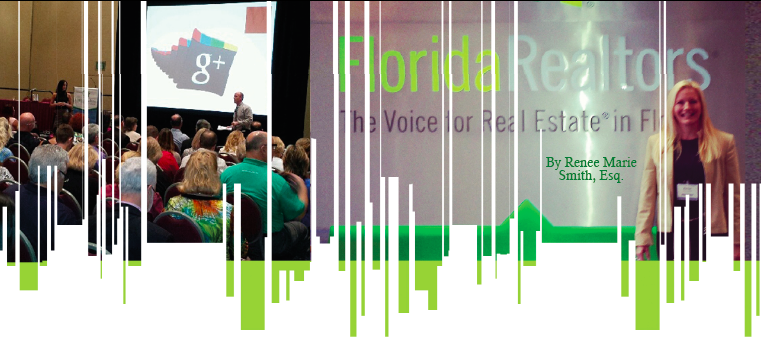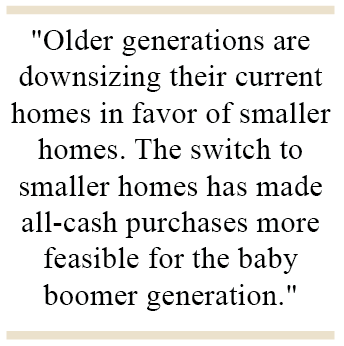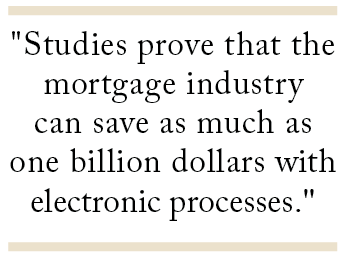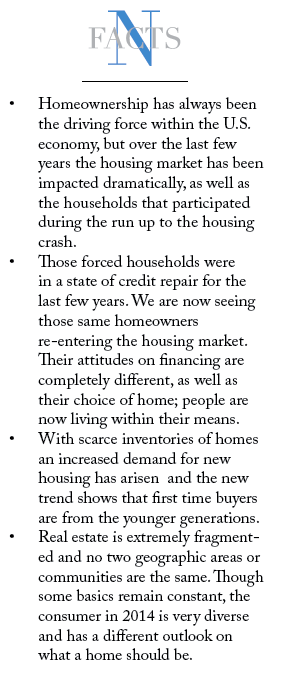Last month, we wrote a blog on New York’s growing number of zombie properties and what the New York Attorney General planned to do about it. Here is an update on the state of housing of NYC as we discuss the mayor’s plan to make housing more affordable for NYC residents.

Know an Incredible Woman Preserving the
Quality of Life During COVID-19?
Submit your story today!
Read More

Consulting & Branding Opportunities
Grant your business access to insider,
proven knowledge to improve the quality of your procured
services and maximize business performance.

If you need D&I
Contact Us!
A Team Focused on Bring Diversity and Inclusion to Every Level
Learn More

#1 Top Real Estate Influencer
Desiree Patno
Diversity & Inclusion, Quality of Life, Know the Rules of the Game ®
Your Next Event
Grow Your Business
NAWRB: An SBA Resource
NAWRB is listed as a women-owned business resource for the SBA.
Check It Out
NAWRB Aging Population
Help Protect Elders
from Financial Abuse
Over $36.5 billion a year is lost annually in the U.S.
Prevent Financial Abuse

Women's Homeownership:
Dream. Stability. Sanctuary.
Life often presents us
with unplanned disruptions.

AI Technology
with
a Human Touch
Is
The Perfect Balance


NAWRB Women's Global Resource Center
A women’s depository for vendors & clients to grow their diverse spend & increase women’s employment at all levels within the housing ecosystem.

Category Archives: Housing
MIT Announces Real Estate Finance and Development Certificate
MIT has announced a summer certificate program for individuals in the real estate industry. The private research university is collaborating with the MIT Center for Real Estate to create the program.
Expanded NY Legislation to Hinder "Zombie Properties"
New York Attorney General Eric Schneiderman announced on Monday his plan to resubmit an expanded bill that would hinder the proliferation of ‘zombie properties.’ The term ‘zombie properties’ refers to properties that have been abandoned by their owners, most often because of foreclosure, and are in disrepair.
Expanded NY Legislation to Hinder “Zombie Properties”
New York Attorney General Eric Schneiderman announced on Monday his plan to resubmit an expanded bill that would hinder the proliferation of ‘zombie properties.’ The term ‘zombie properties’ refers to properties that have been abandoned by their owners, most often because of foreclosure, and are in disrepair.
2014 Florida Realtors Conference

The focus of the 2014 Florida Realtors Conference was productivity, profitability, and professionalism for the more than 2,500 Realtors® that attended in Orlando. In addition to informative training sessions and countless networking opportunities, the conference included a lively Carnaval theme with a concert series that had bodies moving and hands clapping. Attendees had the opportunity to sit-in on more than 30 education sessions, some of which were attended by NAWRB Member Renee Marie Smith, Esq.
A Session Recap by NAWRB Member Renee Marie Smith, Esq.
When Dodd Frank passed, many of us were scratching our heads trying to understand its impact. The Education Session on Dodd-Frank—Why Washington Made Us Change, which included panelists Grant Simon, Dana R. Ward, Michael E. “Mickey” Godat, and Nashad Khan was very helpful. This law is over 1,500 pages of complex legalese. The panel selected isolated topics from those pages to summarize instead of trying to outline the entire law. I highlighted three of these topics.
One: Changes to Debt to Income Ratio in Lending
The crafters of the law saw it as the “answer” to the out of control lending problem; lowering the DTI limits the exposure for overleveraged primary lending. The law phases in the lowering of DTI for lending over the course of seven years so practitioners must revise their underwriting requirements each year to comply. At the end of the seven year phase, DTI will be limited to 43% of revolving debt and loans.
Two: The Power of the Consumer Financial Protection Bureau (CFPB)
This is now the most powerful agency in the U.S. It can investigate, enforce and initiate lawsuits with its own powers and eliminated the need to inter-bureau investigations. If the CFPB appears, you can have a civil and criminal case filed against you. It is funded by fines and imposes a fiduciary duty on all parties involved in consumer lending (including agents). There is no statute of limitations to prevent investigation either.
Three: Pitfalls of Affiliated Businesses
Marketing arrangements are subject to review and fines for failing to properly include disclosures. You can be held financially responsible for your partners’ actions even if you aren’t involved. If you have a joint venture and/or an appearance of an affiliated business, you must learn about the closing disclosure language. CFPB went to a company to investigate one report and stayed for years only to fine them for failure to properly include disclosures. Fines can range from $5,000 up to $1 million a day.
To summarize, when I walked out of the Dodd Frank education session, I agreed that lending in the U.S. was forever changed and not so sure for the better. However, it is the law and if you choose real estate as a profession, learning how to comply in your area is needed. When in doubt disclose, discuss, and decide on the most conservative method of handling consumer loans that come through your office.
Rule Tomorrow by Embracing Technology Today

A day is made up of seconds, minutes, and hours. Today means yesterday is forever gone. It’s the most fundamental part of life and entirely up to us, as real estate professionals, to determine what we do with the amount we’ve been given. Real estate technology innovators are pioneering new ways for us to be more efficient, allowing us to maximize every bit of our precious time. Rule tomorrow by embracing technology today.
 So how did today begin for you? When you woke up did you instantly grab your smartphone, tablet, or notebook? How different was your morning routine 5-10 years ago? Gone are the days of responding to a client’s needs after you get into the office. Some of us may long for those lingering mornings, while others can’t wait to connect, check in, reply, and update our status. No matter your viewpoint, technology is encroaching on our daily lives and it will continue its creep. Clients’ expectations have changed as well. Because there is no stopping this momentum we should view this shift as an opportunity to improve customer service and satisfaction. In order to stay ahead of the competition you must embrace technological advances, discover your “value-added,” and utilize tools that work for you.
So how did today begin for you? When you woke up did you instantly grab your smartphone, tablet, or notebook? How different was your morning routine 5-10 years ago? Gone are the days of responding to a client’s needs after you get into the office. Some of us may long for those lingering mornings, while others can’t wait to connect, check in, reply, and update our status. No matter your viewpoint, technology is encroaching on our daily lives and it will continue its creep. Clients’ expectations have changed as well. Because there is no stopping this momentum we should view this shift as an opportunity to improve customer service and satisfaction. In order to stay ahead of the competition you must embrace technological advances, discover your “value-added,” and utilize tools that work for you.
One cannot say they are truly leveraging technology by simply having a website. Search portals are syndicating listings in complex ways and driving that traffic directly to their doorstep. Small brokerages simply cannot afford to compete in this space; the advertising budgets of online giants like Zillow and Trulia are huge. Of course, I’m not advocating that you take your site offline or stop updating it, but you need to recognize the role it plays in your marketing strategy and bottom line. The next time you sit down with a potential seller, consider this statement, “your listing will be featured on my website,” is not as important as it was a decade ago. You need to create real value for your clients by introducing cutting edge tools that will help them sell their home for the most money and in the shortest period of time. Yes, this concept of time is important to a busy seller too. Win their business by demonstrating that you are the forward-thinking expert. Empower them to focus on their responsibilities without worrying about how much time the process of selling their home will take.
 Warning: if you are scared of technology, you are at risk of being left behind. It’s okay to admit that you aren’t the most comfortable or proficient. However, stating that it adds little to no value to you could be detrimental to your long term relevancy in this business. Although an agent’s role in a real estate transaction will not be replaced, technology solutions are subtly altering the process by minimizing your involvement with each step along the way. This is essentially giving you more time to exceed expectations. Don’t waste it. This trend will continue so you need to find ways to remind your clients of your value proposition.
Warning: if you are scared of technology, you are at risk of being left behind. It’s okay to admit that you aren’t the most comfortable or proficient. However, stating that it adds little to no value to you could be detrimental to your long term relevancy in this business. Although an agent’s role in a real estate transaction will not be replaced, technology solutions are subtly altering the process by minimizing your involvement with each step along the way. This is essentially giving you more time to exceed expectations. Don’t waste it. This trend will continue so you need to find ways to remind your clients of your value proposition.
You cannot let technology run you, you must learn to control it. Take a moment and think about the logistics of your business. Agents in your office may complete the same task with various degrees of efficiency. Everyone finds what works best for  them. What works for you? What do you do manually now that you wish you could do digitally? If you are manually doing something that can be automated, you’re wasting time. In today’s robust app marketplaces, you are bound to find a solution that is just right for you and your unique approach to your business. Finding that perfect mobile application that helps you take notes, scan documents outside your office, or generate new leads should be fun and more often than not, free. But stay focused. Remember to choose the apps that will help you accomplish your goals in a manner that works best for you.
them. What works for you? What do you do manually now that you wish you could do digitally? If you are manually doing something that can be automated, you’re wasting time. In today’s robust app marketplaces, you are bound to find a solution that is just right for you and your unique approach to your business. Finding that perfect mobile application that helps you take notes, scan documents outside your office, or generate new leads should be fun and more often than not, free. But stay focused. Remember to choose the apps that will help you accomplish your goals in a manner that works best for you.
In terms of prospective buyer business, these same mobile apps have ushered in new ways to communicate and connect with people. Prospective buyers are moving their fingers from dial pads to keyboards for texting, “liking,” and tweeting in far greater numbers than ever imagined. They want information, they want answers, but most of all they want us. Not tomorrow or even tonight, but now. Equip yourself with the technology you need to be a digital “first responder.” When you find that the apps you’re leveraging are creating more time for you to prospect, you’re on the right track.
In a world where time stops for nothing, be prepared to seize the moment whenever and wherever it presents itself.
—

Clark Giguiere
Founder & CEO of AgentPair
@clarkgiguiere
agentpair.com
@agentpair
Clark Giguiere has over a decade of experience in commercial and residential real estate, and five years of high volume REO sales and investment experience. He is also the Founder and CEO of AgentPair, a mobile app that connects consumers with agents for on-demand home tours.
Successful Launch of the Women in Housing

The National Association of Women in Real Estate Businesses (NAWRB) in partnership with the U.S. Small Business Administration (SBA) Santa Ana District Office presented the Women in Housing Financial Fitness Road Show this month at the Lutron Experience Center in Irvine, CA.
 NAWRB’s Inaugural Women in Housing Financial Fitness Road Show is a first-of-its-kind, breakthrough program for women in all industries within the housing economy. More than just tools to navigate women’s existing business through the changing terrain, NAWRB’s Women in Housing Financial Fitness Road Show reached a whole new level. Utilizing a specialized hybrid of women in housing and women in government outreach, women can take advantage of our Fast Track niche. By connecting women with federal and local programs, set-asides, funding options and contracting opportunities available to grow their businesses both vertically and horizontally, women in housing will have the awareness to sustainable growth and live beyond commission to commission.
NAWRB’s Inaugural Women in Housing Financial Fitness Road Show is a first-of-its-kind, breakthrough program for women in all industries within the housing economy. More than just tools to navigate women’s existing business through the changing terrain, NAWRB’s Women in Housing Financial Fitness Road Show reached a whole new level. Utilizing a specialized hybrid of women in housing and women in government outreach, women can take advantage of our Fast Track niche. By connecting women with federal and local programs, set-asides, funding options and contracting opportunities available to grow their businesses both vertically and horizontally, women in housing will have the awareness to sustainable growth and live beyond commission to commission.
Hosted by Morgan Stanley, Vivian Afriyie—a Morgan Stanley Financial Advisor—opened the event in dramatic fashion showcasing asset based loans vs. traditional income and credit based loans. Recently, Morgan Stanley closed a 150 million dollar commercial real estate loan in six weeks. “Bringing the shock treatment with our takeaways from $25,000 SBA business loans to the $200 million dollar Morgan Stanley Diversified Securities-based loans for clients, really ignited the awareness in the room,” stated Desirée Patno, CEO and Founder of NAWRB.
Testimonials:
 “Thank you for having the vision and for putting it all together! It was a great event!” -U.S. SBA-Santa Ana District Office, Economic Development Specialist Sylvia Gutierrez.
“Thank you for having the vision and for putting it all together! It was a great event!” -U.S. SBA-Santa Ana District Office, Economic Development Specialist Sylvia Gutierrez.
“Loved the NAWRB Road Show! The caliber of speakers that were there to share with us how to grow our business was very impressive. I loved the way Desirée has a way to break down the information and make it real life and tangible. Great job!” -The Omni Group, Tina Marie Estrada
The resources and opportunities are out there. If you want to be part of the Road Show or have it travel to a city near you, email us at Roadshow@NAWRB.com. Make a difference and join the movement bringing awareness, opportunities, and access to women in housing.
Emerging Mortgage Trends of 2014

It’s no secret that trends within the mortgage and lending industries can fluctuate significantly from quarter to quarter. Countless factors such as the economy, new legislation, and changing demographics can impact these shifts. With the ever-changing financial landscape, we have pinpointed the most current and prevalent mortgage and lending trends of 2014.
Mortgage Volume Drops
 Mortgage loan volumes have experienced a consistent drop across all lenders throughout 2014. In the first quarter, lenders made a total loan volume of $226 billion, an all-time low amount that hasn’t been achieved since 1997. One of the largest lenders, Wells Fargo, took the hardest hit with a 67% drop in originated residential mortgages.
Mortgage loan volumes have experienced a consistent drop across all lenders throughout 2014. In the first quarter, lenders made a total loan volume of $226 billion, an all-time low amount that hasn’t been achieved since 1997. One of the largest lenders, Wells Fargo, took the hardest hit with a 67% drop in originated residential mortgages.
One explanation for the steady decline in mortgage volume is due to the Federal Reserve’s mission to taper stimulus cash. As a result of the tapering, interest rates rose by a percentage point. The rise in interest rates has caused more people to become weary of refinancing which is correlated to the drop in mortgage volumes.
Rise in All-Cash Purchases
One variable has contributed significantly to the drop in the nation’s total loan volume: all-cash purchases. With rising interest rates, all-cash purchases have become a major contender among transactions in the housing economy. Interest rates are hardly the only reason though. Older generations are downsizing their current homes in favor of smaller homes. The switch to smaller homes has made all-cash purchases more feasible for the baby boomer generation.
Foreign investors buying property in the United States have also resulted in a large percentage of all-cash purchases. Buyers from China alone have spent $22 billion on properties in the United States. Foreign buyers tend to be members of the upper middle class and upper class of their respective countries. Waning economies and volatile political regimes have fueled many international buyers to make all-cash housing purchases in the more stable environment of the United States.
In the first quarter of 2014, all-cash purchases accounted for a record high of 43% of transactions. This trend in conjunction with tighter lending standards has predictably led to less lending. As far as domestic purchases are concerned, the all-cash trend could prove to be a temporary fixture as some lenders have joined a movement to lower lending standards. Lenders anticipate that looser lending standards will create a shift from skyrocketing all-cash purchases to more loans.
Paperless Options
Processes within the mortgage industry require a great deal of paperwork, as many people know. It is not unusual for cumbersome paperwork to prolong the process of closing a mortgage and processing miscellaneous loans. Although some measures have been taken to reduce waste, the U.S. Small Business Administration (SBA) and Fannie Mae are taking it a step further by implementing new programs and initiatives.
Maria Contreras-Sweet—24th Administrator of the SBA—recently announced an SBA agenda filled with new initiatives at the Center for American Progress in Washington, D.C. One such initiative includes the introduction of digital processes in favor of traditional yet time-consuming faxes and paperwork. The SBA will usher in a new era filled with electronic signatures and the ability to upload and generate documents. The switch is projected to save not only thousands of dollars but hours of time.
Fannie Mae has joined the digital trend and has commissioned a team to tackle common problems within the mortgage industry. The team identified a lack of electronic processes as the source of many issues within the industry. They found multiple solutions to amend the issue and say as much as $1 billion can be saved with electronic processes. The Consumer Financial Protection Bureau (CFPB) has also taken steps to evaluate what must be done to make an electronic switch. Although it could take years to apply the findings of both groups, it is clear that industries are finding the need to adapt to rapidly evolving technology.
The Decline of Negative Equity
Multiple reports have found that the percentage of total negative equity has decreased in the first quarter of 2014. CoreLogic reported 12.7% of mortgaged homes in the first quarter of 2014 as having negative equity which translates to almost 6.3 million homes nationwide. This statistic sharply contrasts to the 19.8% found in the first quarter of 2013 with 9.7 million homes ‘underwater.’
Nevada—the state with the highest incident of negative equity in residential properties—experienced a 16% drop in the amount of residential properties with negative equity when compared to the first quarter of 2013. Negative equity is forecasted to further decline as the year progresses and home prices steadily increase.
More Elderly with Debt
Elderly Americans carry more mortgage debt throughout their retirement years. An overwhelming amount of senior citizens—those 65 and older—not only have increased mortgage debt but increased credit card debt. The latest statistics provided by the Consumer Financial Protection Bureau (CBPB) reveal that from 2001 to 2011, the amount of elderly  homeowners with mortgage debt increased by 2.3 million. Rising home values and the trend of people purchasing their first homes in the latter half of their lives all contribute to the increase in mortgage debt.
homeowners with mortgage debt increased by 2.3 million. Rising home values and the trend of people purchasing their first homes in the latter half of their lives all contribute to the increase in mortgage debt.
Purchases that contribute to credit card debt appear to be directly related to the relaxed lifestyle most people envision in their retirement years. The idea of retirement for many evokes thoughts of traveling, trying new hobbies, and enjoying leisure time in general. The top expenses among the senior citizen demographic include new automotives, recreational items such as technology gadgets and camping supplies, and miscellaneous purchases for pets.
Experts stress that aging generations must account for a shift in expenses as they reach their retirement years. For example, medical expenses will become a larger factor in a retirees’ budget than compared to someone in pre-retirement years. Experts stress that with careful planning and well-thought spending plans, the growing trend could lessen in the future.
Policy Prescriptions to Assist Women Entrepreneurs

Does the name Alice Paul ring a bell? Alice Paul led the effort to give women the right to vote. She raised money for the cause, led a group of White House protesters known as the Silent Sentinels, was imprisoned three times, force-fed raw eggs when she staged a hunger strike, and kept the pressure on President Wilson to support ratification of the 19th Amendment. She was all of these things, but above all else, she was a fierce advocate on behalf of women.
Today, hunger strikes or stage protests to stop traffic are less common, but we do raise money and we do advocate for the advancement of women-owned businesses. Having just celebrated Women’s History Month, the following are policy changes that will enhance the growth of women owned businesses.
Strengthen Counseling for Women Business Owners.
There are 106 Women Business Centers (WBCs) across the country that counsel and train more than 137,000 entrepreneurs and aspiring entrepreneurs annually, creating 700 new businesses a year at a cost of $122 per person. Last year, WBCs outperformed their goals by 18% and enjoy high customer satisfaction ratings. With the success of these women business centers, Congress should invest in more funding to establish additional centers and to boost the ones currently in existence. The centers are required to match these federal grants by raising matching funds from other sources, but with $14 million in federal money for the whole program they are boot strapped. Women deserve better.
In addition, other entrepreneurial training and counseling programs operated by the U.S. Small Business Administration (SBA) should be given priority when it comes to funding. Programs such as the Program for Investment in Microentrepreneurs (PRIME) are critical pieces of the puzzle when it comes to supporting women entrepreneurs with the skills needed to successfully run a business. Studies show that these investments pay off. According to the Association for Enterprise Opportunity’s (AEO) most recent report, Bigger than you Think: The Power or
Microbusiness in the United States, businesses that receive training have higher success rates (88% are still in business after five years, compared to a 50% success rate for businesses that do not) and have average annual revenues 38% higher.
Similarly, the Department of Labor (DOL) should encourage entrepreneurship as a viable job strategy. The DOL oversees a national network of job training centers, which are allowed to provide entrepreneurial training to unemployed individuals interested in starting a business – thus creating a job for themselves. However, a barrier exists that prohibits these centers from counting people starting a business as a “successful employment outcome,” and discourages these centers from providing entrepreneurial training. The DOL should change their performance metrics to accept a business startup as a successful employment outcome.
Increase Capital Access for Women-owned Businesses.
Women entrepreneurs continue to struggle to access capital to start or grow a business. According to Women Impacting Public Policy’s (WIPP) most recent annual member survey, women make an average of two attempts to access capital, securing a loan only 60% of the time.
The SBA operates a number of loan programs essential to women-owned small businesses: the 7(a) loan program, the Microloan Program, and the 504 commercial real estate loan program. These programs are supported by federal funding, meaning any decrease in funding reduces their ability to make loans. Congress should ensure adequate funding in order to meet the demands of women-owned businesses.
The advent of online crowdfunding is another recent development and step in the right direction, allowing businesses to raise up to $1 million. However, the Securities and Exchange Commission (SEC) threatens to derail it from taking off with burdensome compliance and reporting requirements. The SEC should ensure these costs stay at a minimum to allow this innovative model to take off.
Bring Women to the International Marketplace.
March 8th was International Women’s Day — a good reminder that expanding U.S. women’s business presence abroad through exporting should be a top priority. Many women business owners limit themselves to selling domestically because the international market is too daunting. A simpler, streamlined exporting process, one focused on getting our products abroad, would help. The dividends are significant: women-owned businesses that exported have on average more than 100 times the total annual receipts, five times as many employees, and more than triple the receipts per employee than those only selling domestically. WIPP operates an export education platform, ExportNOW focused on encouraging more women entrepreneurs to engage within the global marketplace to increase their success.
Bring Parity to the Women’s Federal Contracting Program.
The U.S. federal government is the world’s largest consumer —spending more than half a trillion dollars annually. You may be surprised to know that the goal — not mandate — for federal agencies to buy from women-owned companies is 5%;and the government has never met it. The Women-Owned Small Business (WOSB) procurement program, designed to ensure the mandate is met, does not have parity with other contracting programs. There are some bills to combat this in Congress — though none have been a priority for the leadership. That seems to be what the suffragettes fought for — parity. So why are we fighting for this 100 years later?
The histories of women like Alice Paul, and the countless other Suffragettes, serve as reminders of how hard we have fought to achieve the present. But more work needs to be done. To quote Alice Paul, “When you put your hand to the plow, you can’t put it down until you get to the end of the row.” We won’t.
—

Ann Sullivan
WIPP Government Relations
1156 15th Street, NW, Suite 1100
Washington, DC 20005
202-626-8528
Diversity in the Housing Market

Diversity in the housing market is a broad topic, and one with many avenues to venture down. There is a range of buyers and sellers and there always will be. Further, there are an equal number of products for those same buyers/sellers as well. Over the last few years it went from homeowners to banks, investors, foreigners and it is beginning to circle back to homeowners.
Reflecting back on the most recent U.S.Census Bureau State and County Quick Facts data, one can immediately notice diversity, from the various ethnicities, age makeups, and types of homes being owned. This is by far the most widely assumed diversity today within the American melting pot. Most notably though is the homeownership rate. Why is this important? Homeownership has always been the driving force within the U.S. economy, but over the last few years the housing market has been impacted dramatically, as well as the households that participated during the run up to the housing crash. We saw many short sales, foreclosures, and REOs; the resulting effect was many displaced households forced to enter into the rental market.
Those forced households were in a state of credit repair for the last few years. We are now seeing those same homeowners re-entering the housing market. Their attitudes on financing are completely different, as well as their choice of home; people are now living within their means. Competing against these displaced persons are the younger generations in their twenties and thirties beginning their careers and looking to buy their first home. With scarce inventories of homes an increased demand for new housing has arisen and the new trend shows that first time buyers are from the younger generations. These demographics favor higher-end lofts, condos, and townhomes over the traditional single-family residences.
There are plenty of examples of these high-end properties in the Los Angeles area, and the model is slowly working its way out to the Inland Empire. In Los Angeles there are the Ritz-Carlton Residences, the Wilshire Coronado, and 432 Oakhurst set to open in the summer. Most of these communities offer gym facilities, pools, pet amenities, and social activities for residents to interact with one another. In the Inland Empire Lewis Development Corporation built Santa
Barbara in Rancho Cucamonga.
Within the Inland Empire we are seeing homebuilders build again, and this is a positive sign for the area. A unique finding came from The Urban Land Institute’s (ULI) report on Emerging Trends In Real Estate 2014, “…interest in development is up in 2014, and it isn’t the multifamily sector, that lands at the top of the list. Industrial development is where respondents feel the best opportunities exist for development in 2014.” The Inland Empire has long been a hub for industrial warehousing and this amplified emphasis on industrial could spell improved demand for housing starts. Well-known Inland Empire economist John Husing estimated an increase in housing starts of 6,442, up from 4,737.
 The Inland Empire is comprised mainly of blue-collar workers, and a potential industrial spike will likely increase blue-collar jobs. In John Husing’s same presentation he highlighted that manufacturing could be a major growth source for the Inland Empire. This in turn will attract more workers, and as a result increase the demand for housing. With the median wage for manufacturing sectors between $40,000-$55,000, and using the industry standard that a mortgage payment should not represent more than 35 percent of monthly wages, the higher quartile of blue-collar workers qualify for a $225,000 dollar home, with a 3.5 percent down payment. What the above figure describes is a need for moderately priced housing.
The Inland Empire is comprised mainly of blue-collar workers, and a potential industrial spike will likely increase blue-collar jobs. In John Husing’s same presentation he highlighted that manufacturing could be a major growth source for the Inland Empire. This in turn will attract more workers, and as a result increase the demand for housing. With the median wage for manufacturing sectors between $40,000-$55,000, and using the industry standard that a mortgage payment should not represent more than 35 percent of monthly wages, the higher quartile of blue-collar workers qualify for a $225,000 dollar home, with a 3.5 percent down payment. What the above figure describes is a need for moderately priced housing.
Another facet to the home buying market is the entrance of the female consumer. In an Urban Land Institute (ULI) report titled, Resident Futures, the researchers noted young women in their twenties are buying houses at twice the rate of males. More women are entering the housing market, and their needs, wants, and desires are driving a fresh approach on new communities. An MSN story highlighted the following eleven demands of women buyers: big closets, jetted bathtubs, location, security, a great place for socializing, dedicated laundry room, low maintenance, separate shower and tub combination, two-car garage, great kitchen, and a smart layout. With no signs of slowing, the woman consumer is one that the housing industry will be heeding in their housing concepts.
Fostering more housing diversity is the Baby Boomers. The Baby Boom generation was born between 1946-1964, with roughly 4 million born every year from 1954-1964 making up 40 percent of the US population, and is one of the largest groups in the United States. At the date of this publishing the youngest Baby Boomer is 49 years old. As the enormous population of Boomers ages, their need for adequate housing will be stressed. Signs of these developments are already in place as more new homes include a downstairs suite complete with separate bedroom, bathroom, and entrance.
Real estate is extremely fragmented and no two geographic areas or communities are the same. Though some basics remain constant, the consumer in 2014 is very diverse and has a different outlook on what a home should be. Scared from the 2008 housing crash and subsequent recession, the consumer is very cautious and more financially aware. Moreover as the Baby Boomers continue to age their impact in the local markets will also drive change and product types in the housing market. The world will continue to shrink as well, and as people immigrate and emigrate to and from areas, the local real estate markets will evolve to reflect these changes. Diversity is inevitable, and the real estate industry is evolving to accommodate and embrace these changes.
—
 Scott Kueny
Scott Kueny
Strategic Business Partner
Ticor Title Company
www.ticoroc.com

 Login
Login






